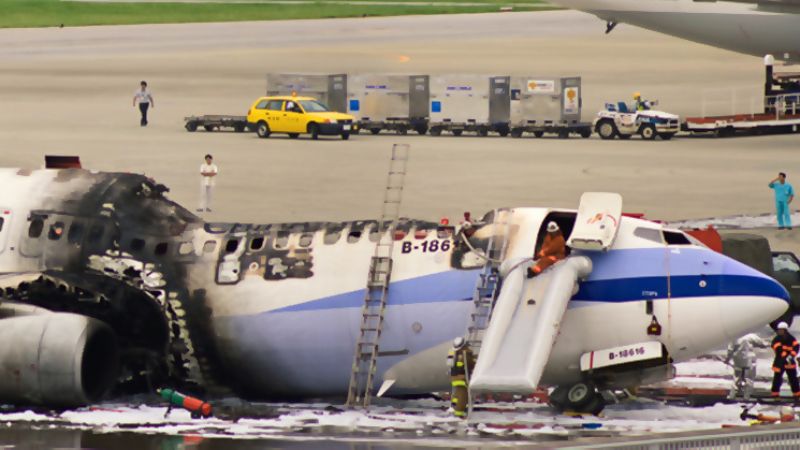Aviation is one of the vast, fast, and efficient transportation across the globe. But as much the ease and comfort comes with these airlines, comes the fear that the one you are flying with is not even safe for you and your loved ones. Although millions of passengers fly every day safely and soundly, still catastrophes and, even typically, fear cast doubt on airline safety records.
In the aviation sector, one of the most frequently asked questions is which airline had the most crashes. It’s crucial to look at the reasons behind aircraft accidents, but it’s also important to address the subject tactfully, considering the lives lost and the impact on families. This article will discuss the historical context of airline crashes, statistics on the most crash-prone airlines, and the development of aviation safety throughout time.
Understanding Airline Safety and Crash Data
Before diving into the details of which airline has had the most crashes, let us first get familiar with the factors that depend on the influence of an airline’s safety record. Different regions and different and diverse airport infrastructure, meteorological trends, and the amount of air traffic in the areas where airlines operate. Safety is affected by the age and maintenance of the fleet, the training and experience of the flight crew, and adherence to safety regulations.
Before evaluating which airline has more crashes, it is necessary to distinguish them all first.
Number of Crashes Over Time
This is the total number of accidents an airline has experienced, usually computed over a specified period of time. However, this figure does not account for the airline’s fleet size or the number of flights it flies.
The Fatal Crashes
This data will cover the fatalistic occurrences. The safety procedures by airlines are much higher than the number of crashes. Still, it’s crucial to examine the details of each case, including if mechanical breakdowns, bad weather, human mistakes, or other factors were to blame.
Accidents Per Million Flights
One important measure of an airline’s relative safety is the number of accidents per million flights. Comparing airlines operating at different scales helps normalize data.
Improvements in Safety Over Time
Significant safety improvements have been made as a result of various airlines that have been involved in multiple crashes in the past updating their fleets, training programs, and operational procedures. In light of the airline’s safety progress, historical data must, therefore, be taken into account.
The History of Airlines with the most Accidents
Primitively, due to their fleet sizes, less awareness, the territories in which they operate, and the times that they were in operation, In the past, some airlines have been implicated in more crashes than others. Let’s take a closer look at a few of these carriers.
| Airline name | Important Historical Events | Safety Record |
| Pan Am: In addition to its contribution to aviation, Pam Am has a rich history of involvement in crash accidents. The airline has been involved in some of the most well-known aviation disasters in its history, including the 1988 bombing of Pan Am Flight 103 over Lockerbie, Scotland. | The bombing incident of Flight 103 claimed 270 lives and was one of the most terrible incidents in aviation history. This incident is one of the bloodiest in Pan Am’s history, even if it was a terrorist act. Additionally, the airline experienced numerous crashes in the 1960s and 1970s. | Even though Pan Am ceased operations in 1991, it left behind both tragedy and inventiveness. The airline contributed significantly to the growth of international aviation, but several high-profile mishaps marred its safety record. |
| Aeroflot: Russia’s national airline, Aeroflot, has a vast safety record. The airline was involved in several mishaps throughout the 1970s and 1980s when the Soviet Union took a different approach to safety requirements than the West. | A few of the worst mishaps in aviation history have occurred at Aeroflot. Throughout the 20th century, Aeroflot has experienced more than 100 crashes. A number of incidents contributed to the airline’s poor safety record at the time, including the tragic 1981 Aeroflot Flight 902 accident that lost 107 lives. | After these mishaps, Aeroflot has worked hard to update its fleets and safety records. Aeroflot operates under more stringent international safety regulations and is thought to be safer now than in the past. |
| Lion Air: It is an Indonesian airline that has garnered attention for its safety records and concerns, but recently, a few of the deadliest mishaps have occurred. | In the year 2018, all 189 people on the 610 flight perished when the aircraft crashed into the Java Sea soon after takeoff. The disaster was attributed to a defective sensor system in the airplane. The airline has also faced criticism for its fleet maintenance and employee training programs. | Lion Air has worked to strengthen its safety procedures, including its addressing issues with the Indonesian government. However, the airline’s accident record raises major questions about its safety standards. |
Present day Airline Safety Standards
Even though the historical crash data offers a valuable background, It’s important to consider how aircraft safety regulations have changed throughout time. Airlines are now held to far higher standards than they were in the past due to frequent audits, inspections, and safety checks.
International Law
The International Civil Aviation Organization (ICAO) is responsible for setting international standards for aviation safety and ensuring that airlines follow a consistent set of regulations for everything from aircraft maintenance to flight crew training and air traffic control procedures.
Development in Technology
The introduction of technology has greatly decreased the danger of crashes. Pilots are well equipped to steer clear of hazardous circumstances due to the advanced navigation systems, weather radar, and flight management systems.
A Better Training and Stimulation for Pilots
Pilots undertaking intensive emergency stimulation have also improved the level of pilot training, guaranteeing that they are able to manage a range of situations.
Information gathering
Nowadays, flight data recorders, cockpit voice recorders, and other devices are used by airlines and aviation safety groups to gather and collect volumes of data.
Summing Up
Before finalizing your trip, you must search for safety and security. And it is absolutely common to think that the more an airline has crashed, the more unsafe it is! The size of the airline’s fleet, the areas in which it travels, and even the time of day it runs are some of the variables that might affect accident rates.
Air travel is one of the safest modes of transportation, thanks to the advancements made in safety by the aviation sector as a whole in recent decades! Although airlines such as Aeroflot, Air France, and Lion Air have faced fatal crashes, they have faced difficulties taking action to improve their safety. The airlines that used to have the highest crash rates are now frequently among the safest in the world.
QnA’s!
A look at historical accident data and safety records to identify the airline with the highest number of crash incidents shows that Air France has had the highest number of crashes, with 11.
Fleet size, maintenance practices, and operational safety culture are some of the factors that affect airline crashes.
Thanks to technological breakthroughs, more stringent rules, improved pilot training, and an increased emphasis on data analysis, airline safety has significantly improved in recent years.
The main determinant is the airline’s overall safety record; airlines with more flights do not always experience more crashes proportionately.

